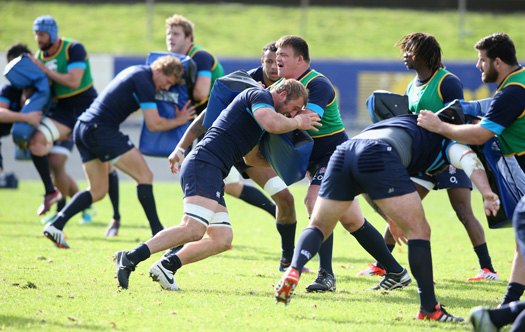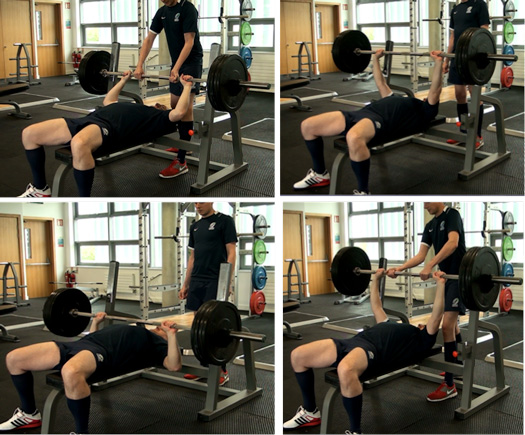Strength
Strength can be thought of as the ability to produce force to overcome resistance or resist unwanted movement. In rugby, the need to produce high levels of force comes into nearly all technical and tactical aspects of the game e.g. scrummaging, mauling, tackling, lifting, sprinting, and evasion. Strength is without question a very important aspects of the physical profile for rugby players and a development pathway should focus on developing this quality to best prepare players physically for the demands of the game.
Figure 7. Developing the capacity to exert greater force during contact is a key conditioning aim.

Jones and colleagues examined the differences in physical qualities between U18 male professional academy players and schools’ players. When looking at strength they examined a 3-repetition maximum bench press and a 3-repetition maximum pull-up test. They found that on average, academy players had a 30% greater 3-repetition maximum bench press than their schools’ counterparts. On the 3-repetition maximum pull-up they found that the schools players added more weight to the pull-ups when performing their repetitions. This, however, can be explained when body mass is considered with the pull-ups, as the academy players were on average 13% heavier than their schools’ counterparts. When total mass lifted, as in added weight and body weight was calculated for the pull-ups, the academy players outperformed the schools’ players again by circa 6.6 %. This highlights the importance of upper body strength even at youth level. This research also shows the importance of a well-planned and resourced development pathway for players. It is likely the academy players in this study were selected early into academy programmes where they have been exposed to better strength and conditioning training and nutritional strategies to help maximise their rugby performance.
Figure 8. In strength testing under 18 male Academy players displayed a 30% greater 3 RM in the bench press test compared to age matched school players (Jones et al 2019).

When players are involved in a professional and well-structured performance pathway from an early age, differences in the physical qualities compared to their non-academy counterparts are easy to see. Whilst clubs at amateur level may not have the resources of professional clubs, a logical, well-designed, and structured player development pathway that is viable with the resources available, will give players the best chance to perform at their highest level.